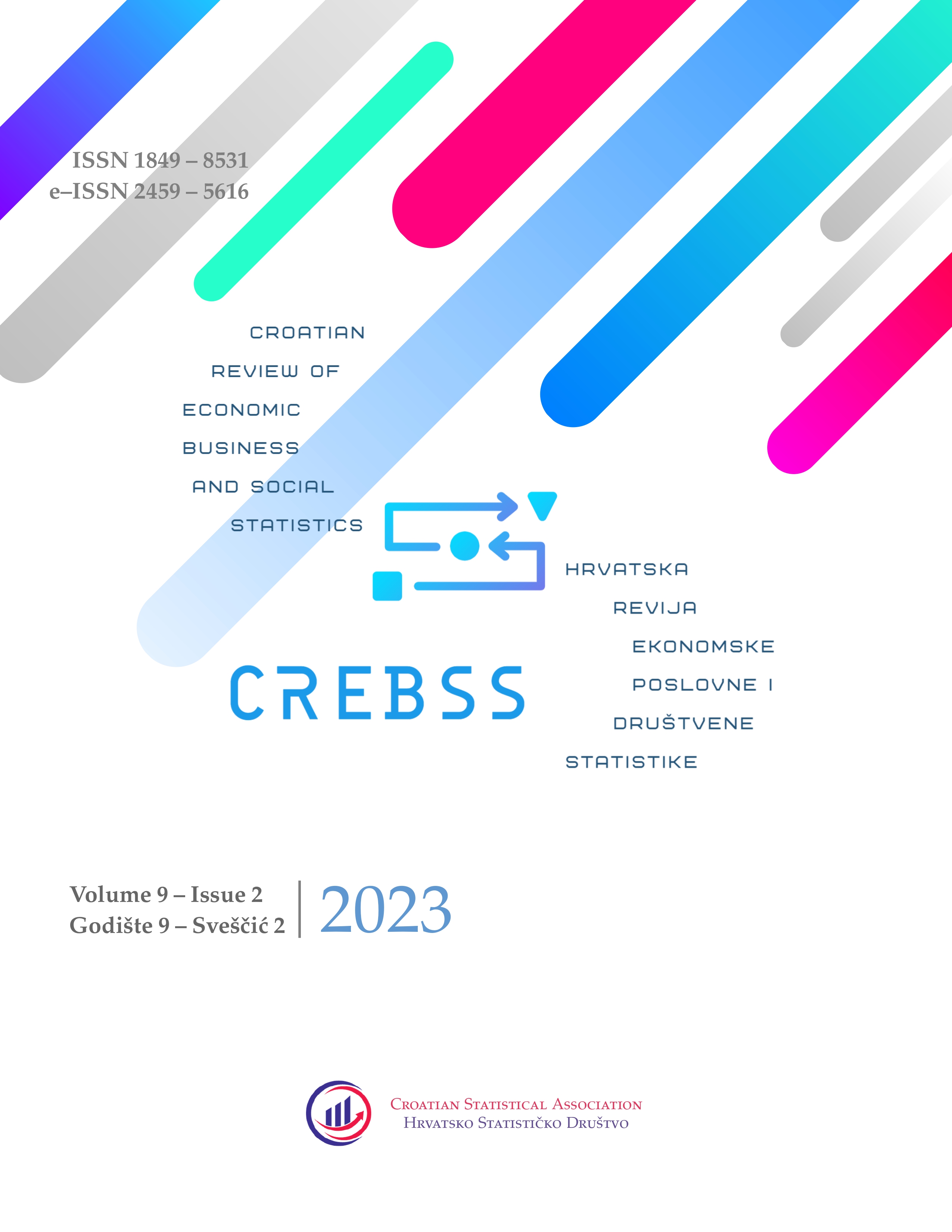The safe haven feature of gold in the recent crisis: Rolling regression approach
DOI:
https://doi.org/10.62366/crebss.2023.2.003Keywords:
crisis, gold, rolling regression, safe haven, S&P500 indexAbstract
The global repercussions of the COVID-19 pandemic had a substantial adverse impact on the overall economy, resulting in equity markets decline worldwide. Amidst this turbulent environment, plagued with uncertainty, investors have redirected their attention towards secure assets to protect their capital. In that context the main objective is to reevaluate whether gold still demonstrates the qualities of a safe haven investment during unprecedented events like the COVID-19 pandemic and the Ukrainian war, events distinct from past crisis we have experienced for example 2008 and 1987. For the same reason, a rolling regression between gold and the S&P500 index was employed, taking into account the time-varying properties of daily returns and opting for an optimal window size. The findings indicate that significant neg[1]ative slope coefficients coincide with the COVID-19 pandemic and the initiation of the Ukrainian war. These results offer empirical evidence that gold continues to maintain a robust position as a safe haven in the perception of investors. Nevertheless, it is essential to emphasize that there is no universally applicable safe haven; the safety features of different assets fluctuate over time, depending on the specific market conditions and the nature of financial turmoil.
Downloads
Published
How to Cite
Issue
Section
License
Copyright (c) 2023 retained by the author(s)

This work is licensed under a Creative Commons Attribution-NonCommercial-NoDerivatives 4.0 International License.

